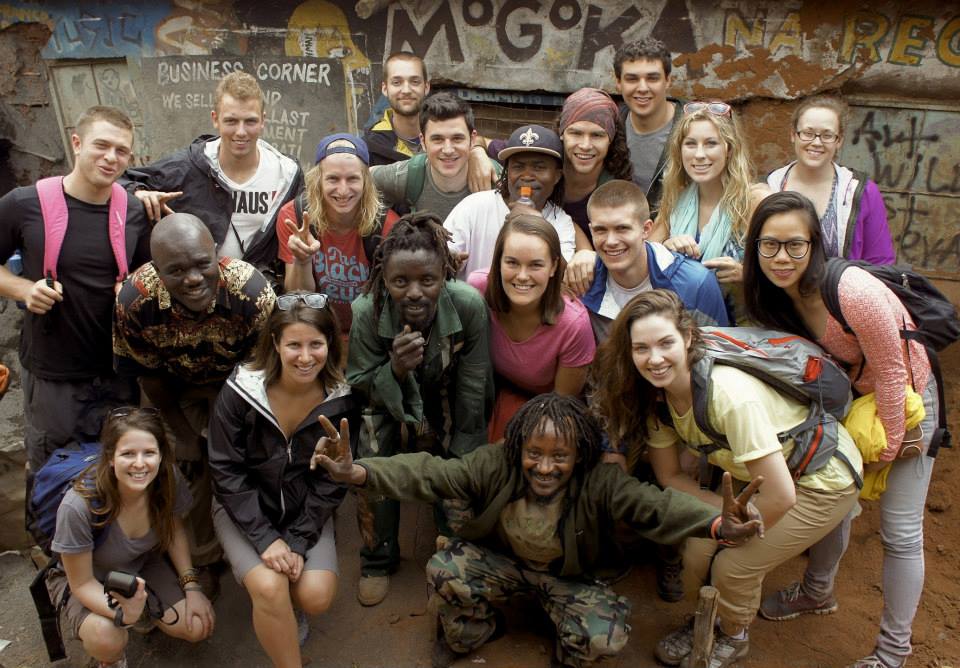Connecting to East Africa, Connecting With Each Other
- Muhammad Mudassir Afzal
- Jul 22, 2013
- 3 min read
What began as a group of 15 strangers quickly became something quite different. Who knows, maybe it was the shoulder-to-shoulder seating in Mutatus for hours at a time, maybe it was 24/7 of shared living space, and maybe it was sharing a plate of Ethiopian with 2 others? Perhaps, scrambling through the markets of Nairobi looking for a single item that represented yourself, or biking through a safari and climbing to “pride rock”, or maybe it could be tackling community projects in Marigoli? It could be white-water rafting down the Nile River, eating delicious stone-oven pizza at Red Chilli, or delivering chickens with our bare hands in Kampala. Some people believe the reason the group became so close was exploring the rolling hills and rich history of Rwanda, or taking time to relax on the coast of the Indian Ocean. Whatever the main reasons are it became quickly apparent that this group of 15 travellers would have a tough time saying goodbye at the closing of a 6-week journey through East Africa.
The trip was all about balance. We had 8 dapper gentlemen and 7 lovely ladies, and we maintained a cycle of work, travel, relaxation, and adventure.
What exactly did we do?
We worked hard. We began to get acquainted with some NGOs in Kenya by meeting and learning about Mwelu foundation, a digital multimedia organization that provides free educational opportunities to kids in the Mathare slum. We then changed our focus a bit and met with Ashif from Maasai Mbili, an art studio that is located in the Kibera slum and has become very renown for its street art and free children’s art schools on weekends.
With the artists of Maasai Mbili
We then went west, reaching the small community of North Marigoli in the Kiritu area of western Kenya. There we began community-requested projects with locals where we broke into smaller groups. We continued working on a road that had been funded by Operation Groundswell in the past, which helps to close the gap to finally give the hillside community of Muhalia vehicle access. We helped 13 schools in purchasing a large photocopier to be shared between them, drastically reducing the printing and thus exam costs for students in the area. We built a bridge that has average daily traffic of about 200-300 people, covering the existing fallen tree bridge. Lastly, we increased the capacity of Good Shepherd, a local school, by purchasing textbooks for their newly added 8th grade classes.
Lastly in Kampala, Uganda the team worked with RWEYOWA (Rescuing Widows, Orphans, Youth & Orphans with AIDS). The team built 7 chicken coops for families affected with HIV/AIDS and provided chickens for more than 20 families. The chickens can not only be sold or eaten to sustain a family, but they lay eggs that assist in relieving the financial burden these families face due to medication costs.
Chicken coops!
We traveled lots. Starting in Nairobi we took crammed matatus to Lake Naivasha to visit Hell’s Gate National Park. We then hopped another Mutatu to Mbale in western Kenya outside of Kisumu. After spending a week in North Marigoli, we took an overnight coach bus from Kisumu to Jinja, Uganda for some white water fun. After a brief stint in Jinja, we decided Kampala would be our next destination and we split our time between Bugolobi and Namasuba. After exploring the city streets and building some chicken coops we took yet another overnight bus to Kigali, Rwanda, where we learned about their tragic history. Talk about a whirlwind journey!!
Fun at Hell’s Gate National Park
The group then split off for some independent travel time, taking overnight buses, and flights to cross the great Tanzanian plane and meet back up on the coast of Kenya in Kilifi. Some took buses to Arusha to climb Kilimanjaro, some flew to Zanzibar, while some bussed to Dar Salaam. Whatever the means of transport we covered over thousands of kilometres in 6 weeks!
Upon returning to Nairobi at the beginning of July, it was clear that everyone had grown and experienced so much in a six-week, period. Although it felt like only a week before everyone had arrived the group sped off the the airport and everyone departed back home. What began as 15 strangers ended with 15 unique people whom would always foster a connection to one another and East Africa.





Comments